Startupfest asked me to write a guide for the 100+ startups pitching at the event. I chose the “Hearts, Minds, Wallets” approach because it's a simple structure that leaves room for creativity.
Last week I had a chance to hear the resulting pitches live and in rehearsal. Some of the best pitches were some variation of this:
- ❤️ a personal story or a vivid description of a pain point
- 🧠 details about the product or strategy that overcame my skepticism
- 💰 a combination of traction and team that built confidence
Three minutes is more than enough time to share 3 important things about your startup that make the investor/judge/audience want to know more.
Let's jump into the guide.
Mindset
You shouldn't feel bad if it's challenging to condense your startup into 3 slides and 3 minutes. It's tough because:
- Your strategy is still changing. It’s hard to sound certain when you’re still learning, experimenting and pivoting.
- You know too much. Having too much knowledge is a curse when it comes to storytelling. The best stories are the simplest.
- You can’t control who's in the room or what pre-conceptions they come in with.
Don’t worry about having the perfect strategy. Go all-in on the best strategy you have today.
Don’t over-explain. The goal of a pitch is to excite, not educate. Memorable is better than knowledgeable.
Don’t try to guess what VCs want to hear so you can adapt. Be true to your story because investors are investing in you.
Part One: Have a Heart
The first slide should be where you talk about the problem you solve. And the best way to do that is to build empathy. Make the pain points you solve extra painful by describing them in emotional terms. Don’t just use numbers and statistics.
Use big imagery or a bold design or emotional delivery to quickly make the audience feel what you want them to feel.
Here’s an example:
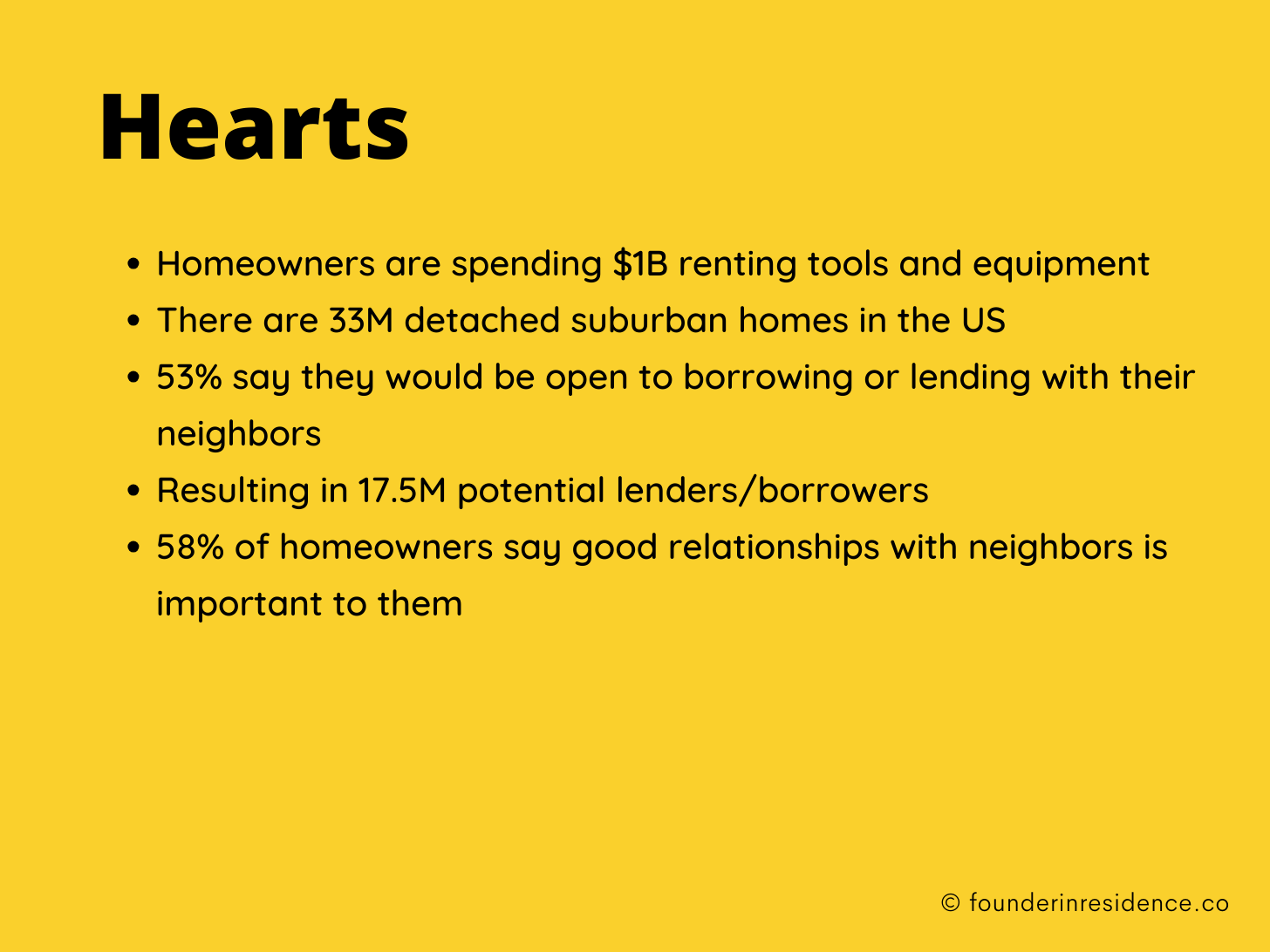
The slide has great information and you could even find a way to make those stats sound convincing. But it doesn’t activate the heart at all.
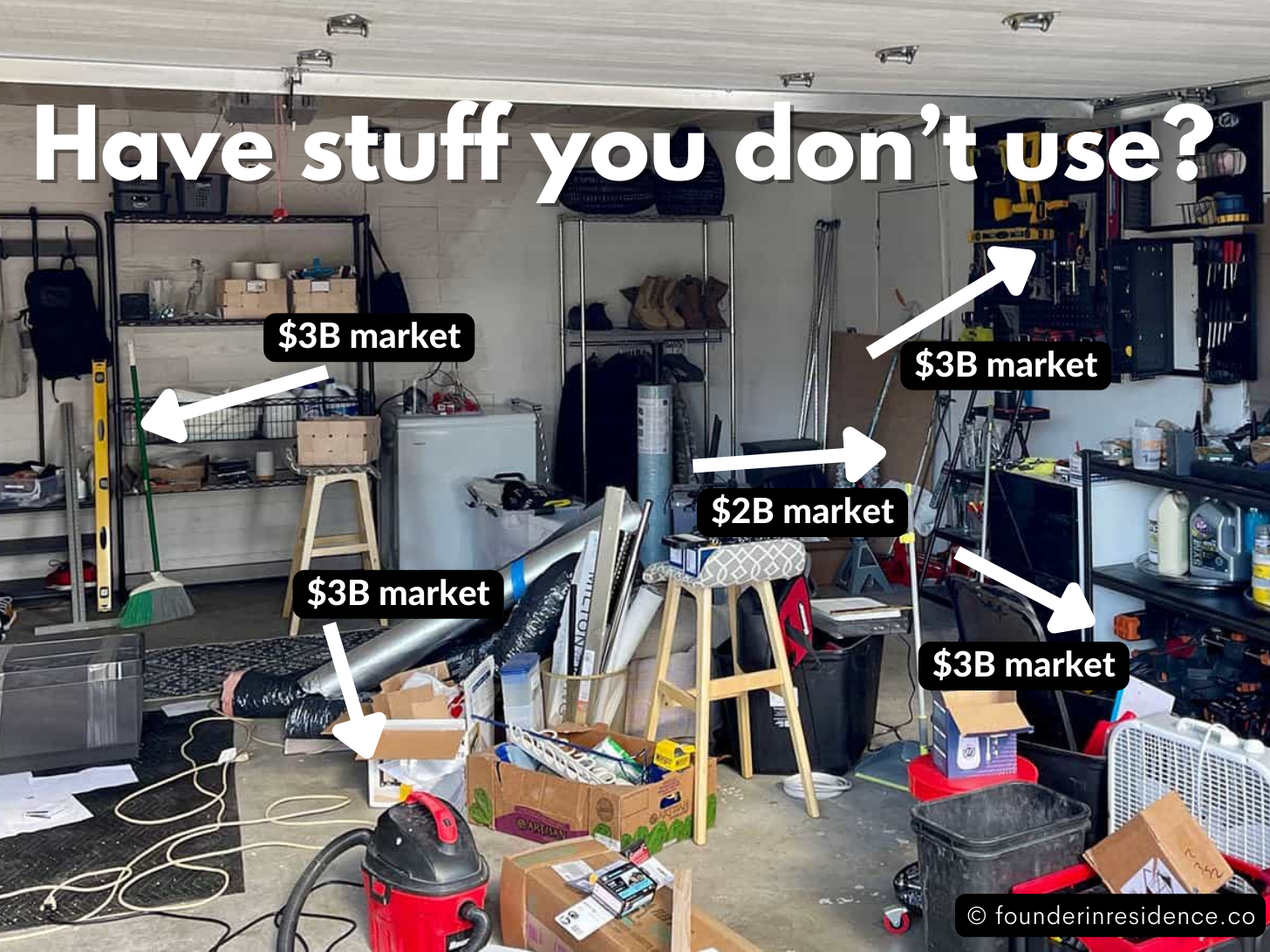
The second slide replaces words with a big image. It’s designed to make the audience think about their own home or garage. How much stuff is in there and, wow, there are billions of dollars of goods lying around that aren’t used. What a waste!
Your verbal script could be something like this:
How many people in the audience have power tools they’ve only used once? Or a lawnmower you use 12 times out of 365 days?
Last year, I was cleaning out my garage when I saw so much waste. I started talking to my neighbors and we all agreed: we’d save money and storage space if we just shared. Plus it would be more sustainable.
That’s why I started Good Neighbors to replace buying with sharing for rarely used goods. Since then we’ve shared 1000 goods in our test neighborhoods. And something surprising happened along the way: I got to know people who live nearby.
Notice there is a protagonist in this story: me. Make sure you don’t forget to include yourself in your pitch. Why did you start the company? What are you passionate about? Why do you care so much about this problem?
A fantastic way to activate emotions is to tell your own personal story.
Part Two: Fortune Favors the Prepared Mind.
Enough about squishy feelings. Your next slide is your opportunity to appeal to reason and logic. Less Kirk, more Spock.
This is where you talk about your product, solution and competition.
Start by showing or describing your product. Don’t list all the features and benefits. Just give a plain language 1-2 sentence description of what it is. Don’t fill your slide with screenshots.
The part of your story that investors care about is your solution, not your product.
Wait, there’s a difference?
A product is what you built. A solution is your special knowledge, proprietary IP or unique discovery that makes your product valuable.
Product - mobile app for taking photos of household goods, generating product descriptions and connecting with people who want to borrow them.
Solution - we use AI to generate product descriptions from a single photo, or we only allow users to share with people within walking distance.
After knowing what you do, the mind wants to know what’s special. Features, buttons, UIs, etc are not special. Challenge yourself to figure out what is truly unique about what you do.
That’s usually one of these things:
- Something surprising you discovered, something unexpected (eg getting to know your neighbors)
- A technological or scientific breakthrough (eg novel application of generative AI)
- Something that took a long time and many iterations to achieve (unique insight discovered after watching 1000 lawnmowers shared)
- Something contrarian: (eg everyone believes people want to own more stuff, we believe people want to free themselves from stuff)
If you do a good job describing your uniqueness, you will automatically address the competition. Because uniqueness = competitive advantage.
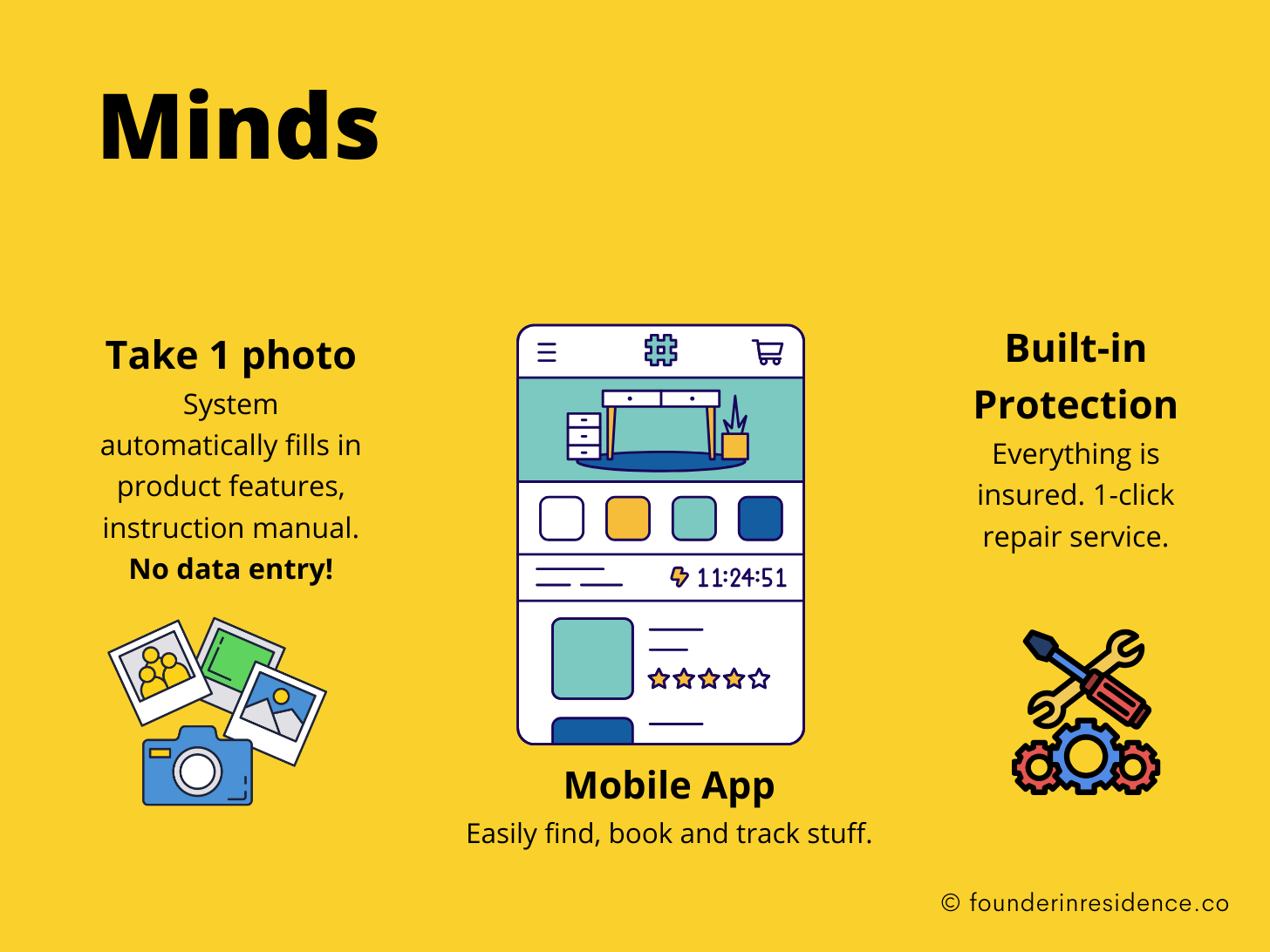
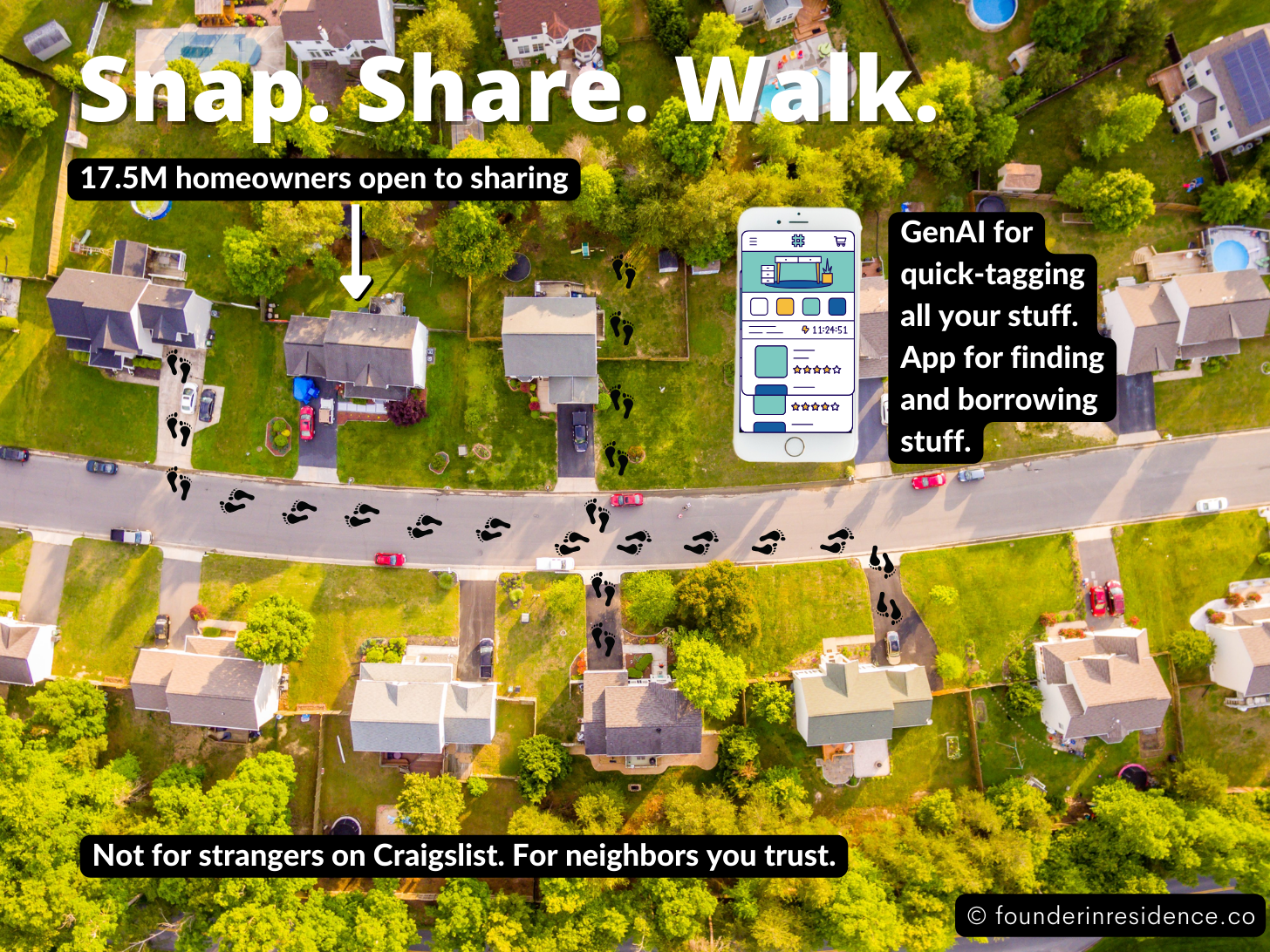
The first slide focuses on a screenshot and features. It’s actually pretty good because it’s not a screenful of UIs and lists of features.
But the second slide is better. A big image makes it so much easier to communicate key points:
- Snap. Share. Walk. tells you how the app works and that it’s walking distance only (uniqueness)
- There are a lot of homes in the target market. It’s big.
- We use generative AI to remove the inconvenience of writing product descriptions
- Competition: Craiglist and similar platform are for buying/selling to strangers, we are for sharing with people you see everyday
Part Three: Get Out Your Wallet
Every pitch to an investor must activate their greed. Otherwise they won’t feel they can make money or feel urgency to invest now. Often when an investor ghosts you they aren’t saying “no”, they’re saying “what’s the rush?”
Don’t just share your financial projections or talk about your pricing model (though you could include a little of both). Use this slide to talk about why this is an opportunity to make money and why the opportunity exists right now.
You can combine many things on this slide: traction, projections, why now and the ask.
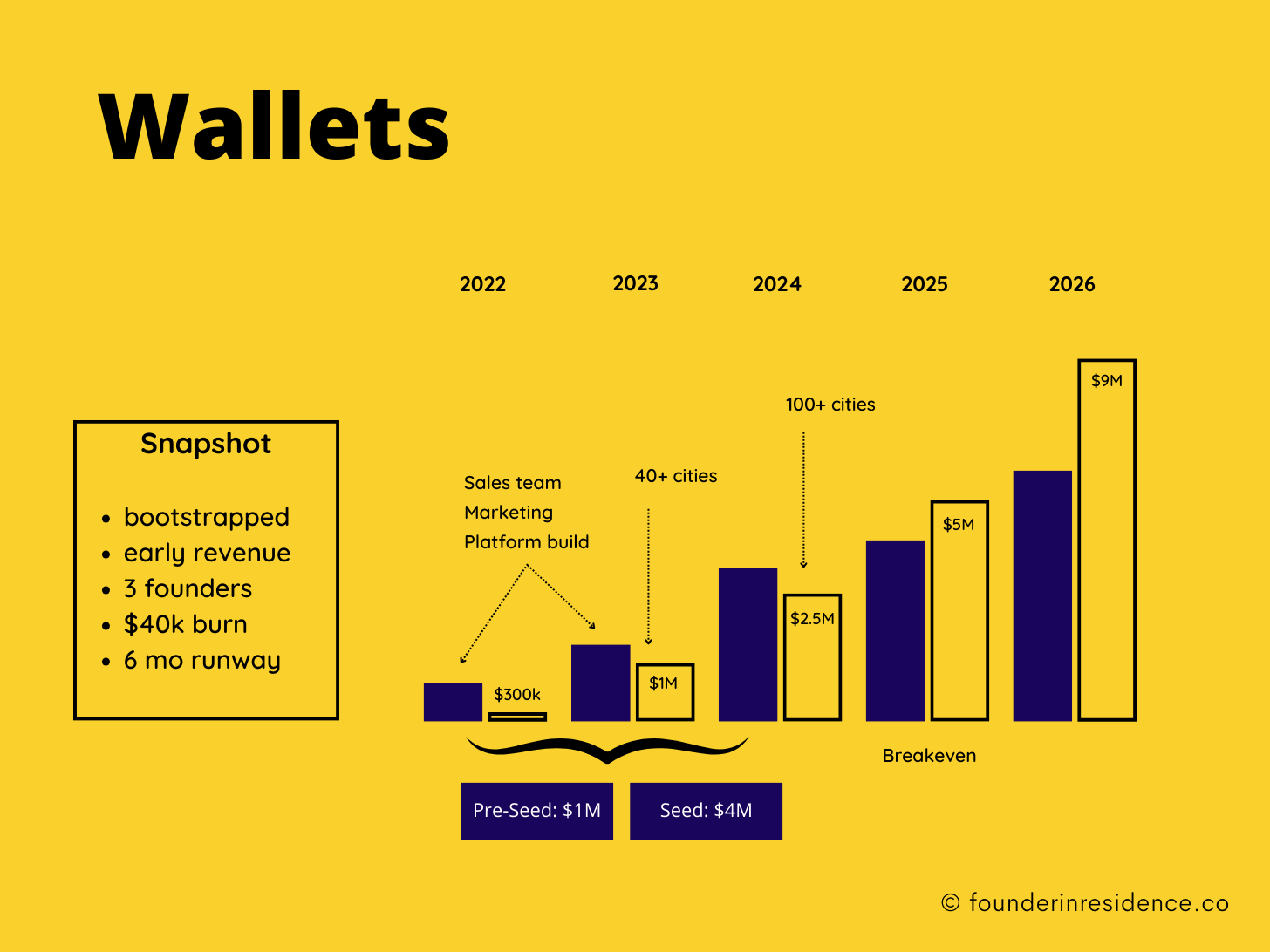
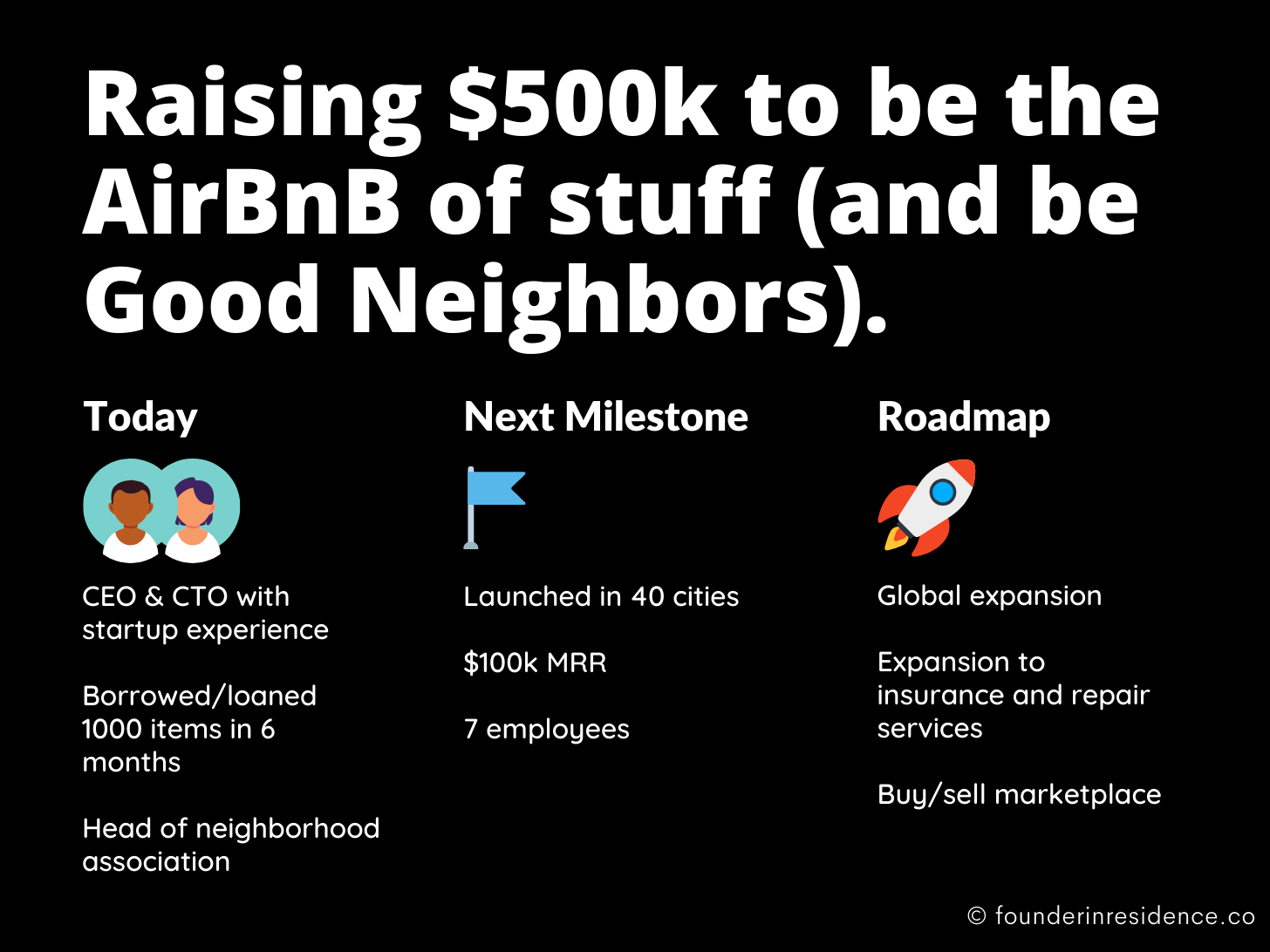
Just because the slide is about wallets doesn’t mean you can only talk about money, like the first slide. Your objective should be to talk about things that make the investor reach for their wallets.
The second slide is better because it combines these things:
- An ask
- A snapshot of who you are and where you are today
- What milestone you will achieve with the funding
- An idea of traction and momentum (eg 1000 items shared in one city today, $100k MRR in 40 cities with the funding)
- A future roadmap pointing to how you can scale and expand even further
So why should an investor reach for their wallets right now?
- It’s a great team who are passionate about the space (which you introduced in slide 1)
- There’s already growth and momentum (neighbors are doing the core behavior)
- There’s a clear path to expand and get to revenue in the next 12-18 months
- This could become a platform that encompasses other products/services, like Uber
As you can see, we’re a passionate team that’s not afraid to get our hands dirty. We’ve been contacted by 20 cities just through word of mouth and people are telling us they love the combination of practicality and community building. We already have commitments for our pre-seed round but we are looking for a lead investor especially with experience in marketplaces.
Now Go Break Some Rules
The worst thing you could do for your pitch (and for humanity) is to follow the Hearts, Minds, Wallet format blindly. It’s not a template. It’s a starting point.
How you express your story is up to you. My advice? Break some rules!
Have a personality.
Subvert expectations.
Mix up the format in a way that lets you stand out and be unique.
After all, isn’t that what investors are looking for?




